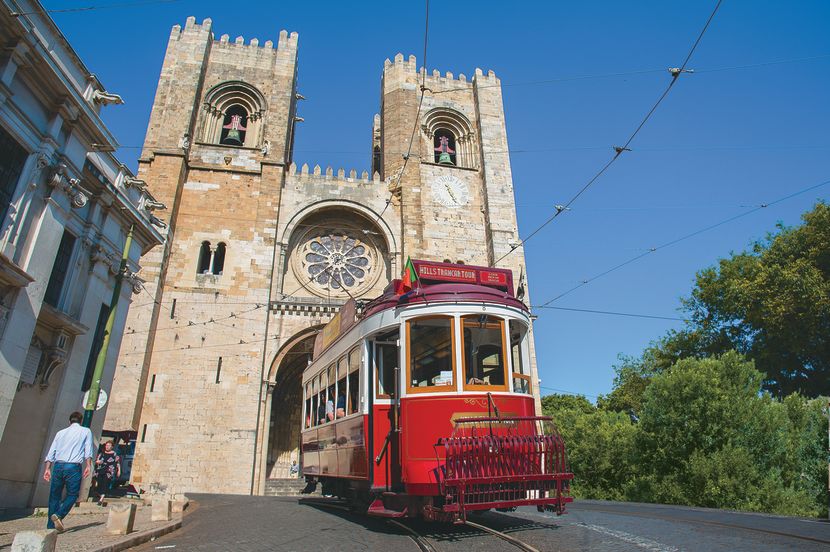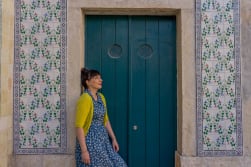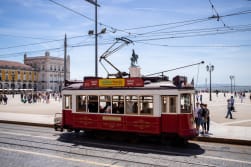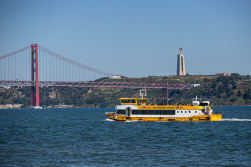Discover Lisbon through the tourist tram 28 route
When we see something about Lisbon, the chances are enormous that the image of a tram running through the streets will appear. And every city guidebook mentions the famous 28, a route through Lisbon's oldest quarters aboard a small tramcar.
It has thus become popular as the "Tram 28", and is a mandatory experience for everyone visiting Lisbon. You could say it's a 2 in 1: the discovery of Lisbon's History through its old quarters, combined with the experience of doing it "the old fashioned way", on board a transport that crossed generations.

What to expect on a trip aboard the "Elétrico 28”
The journey through Alfama, with its narrow and winding streets: the typical Islamic layout, of those who preceded us in medieval times;
The discovery of the true essence of Lisbon, of houses with flower pots, neighbours chatting by the window, the washing hanging out in the sun, sidewalks and patios where kids and adults gather to socialize, churches - and the Cathedral - with centuries of existence, grocery stores next to Fado houses, viewpoints over the Tagus River, where you can see the hustle and bustle of the cruisers and ferries in the blue that merges with the sky.
The sash window, the “Guarda-Freio” that drives the tram and changes the line with a big iron key, the up and down of the rails, the sand box that leaves grains along the way when the wheels need to adhere well to the ground.

From Alfama,Bairro Alto to Estrela or from Martim Moniz to Prazeres
The climbing up of Alfama hill, the oldest quarter in Lisbon for its water resources here (the Tagus is already salty water in the Lisbon area, due to its proximity to the Atlantic) and where stories are told, of Phoenician navigators passin by, of the Romans and their urbanizations, the Moors and their castle, and of our first kings.
The passage through the houses where that old and famous song, Fado, is heard, accompanied by the Portuguese guitar, unique and complex, with an impressive and soulful melody.
Trams have to take turns when riding next to monuments such as the Pantheon or São Vicente de Fora, and further ahead you can see the Castle, the Cathedral, or the Church of Saint Anthony - because the famous Saint Anthony of Padua is a true Lisboner.
The climbing to the bohemian places and noble palaces of Bairro Alto, passing through the eclectic Chiado, of socialisation and Art in all its forms.
The steep climb to the Basilica da Estrela, one of the city's biggest monuments, which can also be seen, a little from all over Lisbon.
The Surprise Factor
If Tram 28 is the most famous public tram, there is another red streetcar that overflows with charm wherever it goes: it is the Hills Tramcar, which Yellowbus Tours has recreated as a tourist tour. Besides being a complete trip through the most impressive tracks of the city, it is a trip back in time with the smell of velvet, varnished wood, and a contagious voice that whispers all the stories of Lisbon, from the times when it was a young lady, through the headphones of the audio system.
We promise to deliver what is in your expectations, and exceed them by surprising you.
Book now the Hills tramcar tour.









